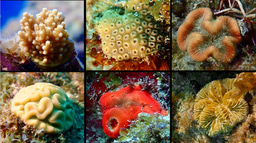Mammalian middle ear evolution
Published in Ecology & Evolution

We have just published an article in Nature Ecology and Evolution that exploits modern comparative developmental biology that reveals that the activity of bone- and cartilage-eating clast cells is a key mechanism by which the middle ear separates from the jaw, allowing for the evolution of the definitive mammalian middle ear.
I first gained an interest in the evolution of the mammalian jaw and ear during my PhD work when I studied the development of the mouse mandibular skeleton. Eventually my PI Abigail Tucker and I won the funding that allowed us to pursue our investigations into the ear and jaw from an evo-devo perspective. Shortly after our work began, we discovered that Karen Sears and her then PhD student Dan Urban in Urbana, Illinois were also taking a similar approach and so rather than compete we all decided that we should collaborate. Across the two labs we studied the development of middle ear and jaw in mice, opossum and various reptile species. Good fortune meant that Zhe-Xi Luo, a palaeontologist in Chicago with an expertise in mammalian evolution, could be brought on board, as he was already acting on the thesis committee for Dan’s PhD. We therefore had assembled a great team of developmental and evolutionary biologists to address this fascinating question.
In London I had been studying histological sections of Meckel’s cartilage in mice during the time that it breaks down, trying to understand how this happens. It seemed likely that clast cells, which eat up the extra cellular matrix of bone and cartilage as part of normal remodelling during development and homeostasis, played an important role.
We looked for these cells in two species of mammal, a placental (mouse) and a marsupial (opossum), and in non-mammals, corn snakes and geckos. Satisfyingly, while we could see the clast cells at work on Meckel’s cartilage during its breakdown in mice and opossums, they were not found in the cartilage of either reptile. As such we concluded that clast cells are an important player in the separation of the middle ear from the mandible.
Being developmental biologists we like to break things to see how they work, so we looked in a transgenic mouse that lacked a gene called cFos. This gene has many jobs, including acting as a key component of the clast cell differentiation process, and so cFos null mice are not able to make clast cells. Happily (for us) there was no breakdown of MC in these mice when we looked in early postnatal stages. To make sure that this wasn’t due to a general delay in development - these mice are pretty small - we nursed some animals to adult stages. This included feeding the mice a soft diet since the lack of clast cells means that the teeth were unable to erupt from within the mandible bone. Amazingly, when we looked in adult cFos null mice, we found that not only did the Meckel’s cartilage stick around, but it appeared to have ossified. This implied that the branches of the primitive mammals that gave rise to modern mammals included those animals that had an ossified cartilage.
Meanwhile, Karen and her team in Illinois were able to replicate these findings by treating opossum pups with an osteoporosis-treating drug that inhibits clast cell activity. We could therefore prove that this mechanism is conserved throughout therian mammals. Finally Luo helped us to carefully compare our mutant mice with the fossil record. In doing so we were able to show that not only did the mutants resemble the fossils in the persistence of the Meckels’s cartilage, but also in the groove the cartilage leaves on the inner surface of the mandible bone. This groove is found much more often in fossils than an ossified Meckel’s, which may be very thin and therefore easily lost.
Working together across three different institutions in two countries, our team demonstrated the power of collaborations with other disciplines and expertise. Finally, we also show that the old-school morphological and paleontological approach can be greatly informed by more modern wet-lab approaches.
Written: Dr Neal Anthwal, post doc in the lab of Prof Abigail Tucker
Read the article in Nature Ecology & Evolution, here: http://go.nature.com/2mzMsi1


Please sign in or register for FREE
If you are a registered user on Research Communities by Springer Nature, please sign in